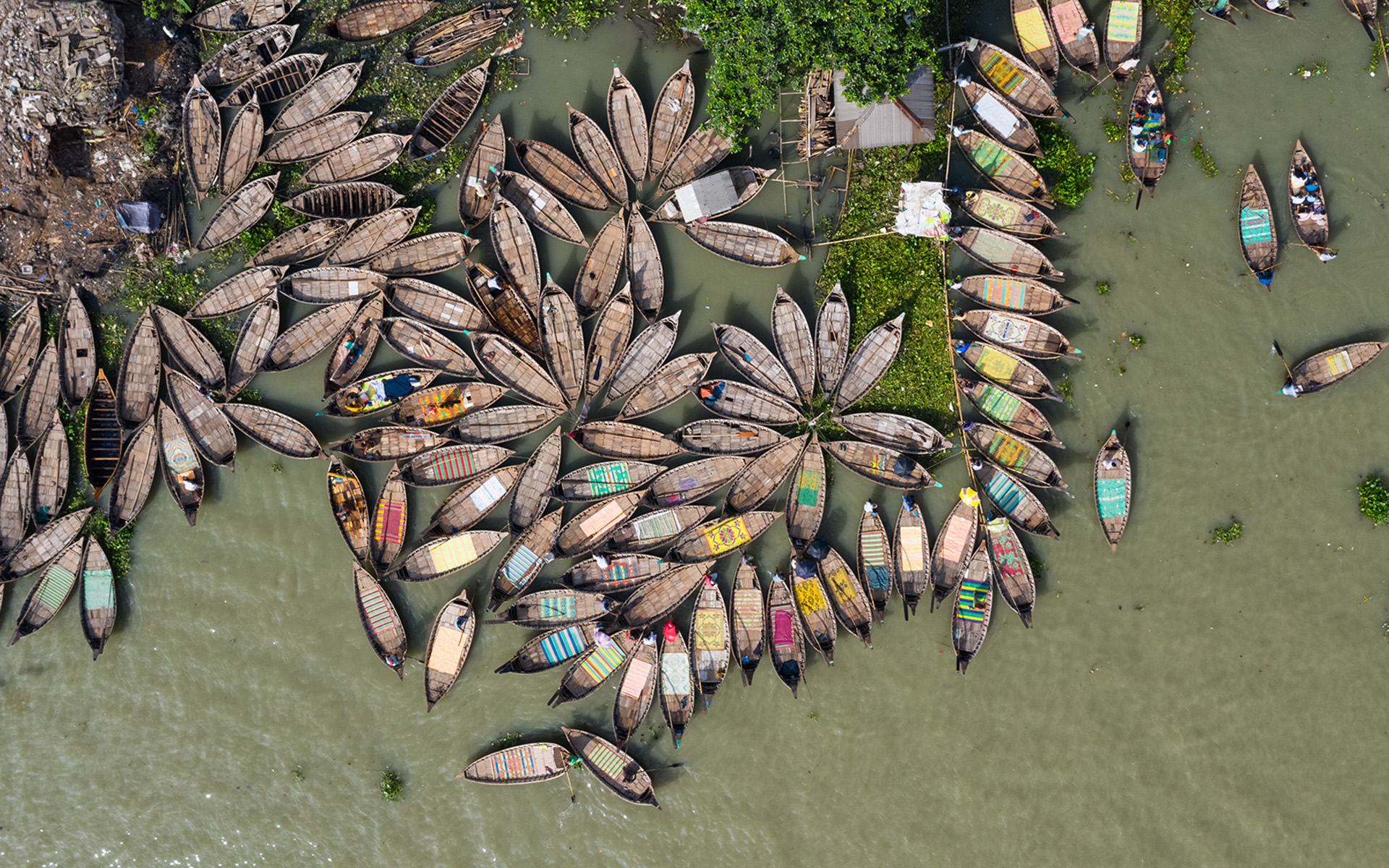One of the region’s great megacities and a successful exporter, Dhaka also suffers from floods, water shortages, and extreme heat.
City Class Score
| Commercial Hubs | |
| Export Champions | |
| Mobility Connectors | |
| Climate Resilient |
Corporate HQs, MNC presence, branded outlets, hotels, manufacturing, start-up ecosystem,
transport linkages, population, and income.
Go to the class information
Manufacturing, industrial parks, export share and share change by category, air and port
infrastructure, freight time to market, trade agreements, and expert interviews.
Go to the class information
Passenger traffic, flight connectivity, air-cargo flights, port infrastructure, container
ship sailings, and major road networks.
Go to the class information
Coastal and river flooding, extreme rain, extreme heat and humidity, cyclones, and water
scarcity.
Go to the class information
In the alleyways of Dhaka’s old city, a culinary adventure awaits. Here, street
vendors provide local delights — think hilsa fish curry, fragrant biryani, and sizzling kebabs.
Residents gather at roadside tea stalls, savoring sweet chai as they soak in the lively atmosphere.
The scene reflects the city’s rich heritage, a delightful blend of cultures with roots dating back
to the Mughal period. Nearby, the historic Lalbagh Fort, a stunning 17th-century Mughal structure,
stands as a testament to this past. Yet amid this vibrant tapestry, vendors face the harsh realities
of Dhaka’s climate challenges, grappling with extreme heat, floods, and water shortages.
Dhaka deservedly ranks higher than many peers on our list of Export Champions. The city has
attracted some of the world’s biggest apparel and footwear brands, along with investments from
China, South Korea, and Taiwanese suppliers. However, climate challenges pose a significant threat
to the city’s industrial success. Nestled in a low-lying delta region, Dhaka is surrounded by major
rivers — the Padma, Meghna, and Jamuna. Much of the land sits less than five meters above sea level,
and relentless monsoon rains make it one of the most flood-prone of our 1,500 cities.
Nearly half of Dhaka is vulnerable to annual flooding, as the heavy rains often overwhelm clogged
drainage systems. While the city has invested in flood prevention measures, including earthen
embankments, these are not foolproof solutions in a world increasingly affected by extreme weather.
Other cities on our list face similar river and coastal flood risks, but the speed at which Dhaka’s
defenses become overwhelmed is especially challenging, and low-income groups that often live or work
in flood-prone areas are disproportionately impacted.
Adding to the city’s woes,
ironically, is a troubling water scarcity. With water bodies around Dhaka either polluted or built
over, the city relies on groundwater for more than two-thirds of its water consumption. But
overextraction has caused ground water levels to drop more than 20 meters over the past decade. This
decline not only impacts households but also poses a critical challenge for the apparel
manufacturing industry. Heat is yet another emerging risk, prompting Dhaka to appoint a chief heat
risk officer in 2023 after the city recorded unprecedented temperatures exceeding 40 degrees
Celsius. When combined with high humidity levels, it may pressure companies to provide measures such
as shorter shifts or air-conditioning.

